Where and how persimmon grows: features of the culture and its cultivation
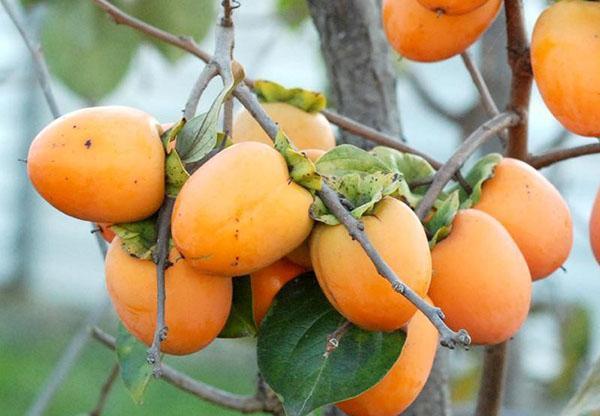 Bright orange fruits that appear on the shelves only in late autumn and winter cannot be seen in the gardens of the middle zone. How does persimmon grow? Where is the homeland of this plant, and what are the features of its cultivation?
Bright orange fruits that appear on the shelves only in late autumn and winter cannot be seen in the gardens of the middle zone. How does persimmon grow? Where is the homeland of this plant, and what are the features of its cultivation?
The habitat, familiar to persimmons, is the subtropics and tropical regions of Asia. The extensive genus of deciduous trees belonging to the Ebony family includes more than seven hundred species that are distributed from China and the Caucasus to Malaysia.
Read also about the benefits of persimmon!
Where does persimmon grow?
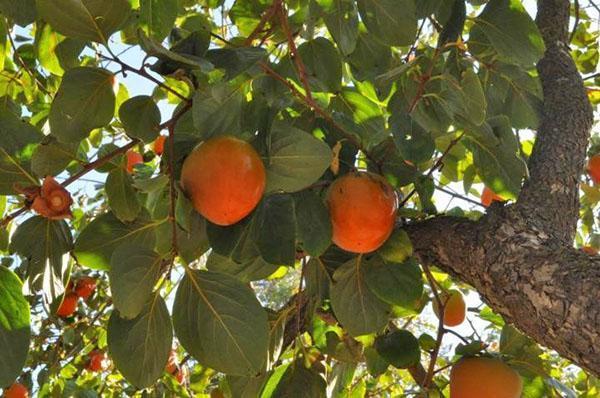 Man has long appreciated the taste of ripe persimmon, and today various varieties of the plant are cultivated around the world, where climatic conditions permit. Thanks to selection and the appearance of frost-resistant seedlings, persimmon has significantly expanded its natural range. A crop with a long growing season has found a place in gardens in southern Europe, the North American continent, Japan and Australia.
Man has long appreciated the taste of ripe persimmon, and today various varieties of the plant are cultivated around the world, where climatic conditions permit. Thanks to selection and the appearance of frost-resistant seedlings, persimmon has significantly expanded its natural range. A crop with a long growing season has found a place in gardens in southern Europe, the North American continent, Japan and Australia.
In Russian stores, sweet fruits most often come from Turkey, Israel, the countries of the Caucasus and the North Caucasus, where from time immemorial cultivated trees of a local, rather unpretentious type have been grown.
Since the beginning of the last century, persimmon cultivation has been established in the Crimea. A valuable fruit crop plantation was established in the Nikitsky Botanical Garden. Serious scientific work on the development of new winter-hardy varieties adapted for Russian conditions was also started here.
Among the achievements of the Crimean breeders are the varieties Rossiyanka and Nikitskaya Bordovaya, which successfully bear fruit on the peninsula and tolerate cold temperatures down to –25 ° C without much loss. These varieties have made it possible to grow persimmons in Ukraine.
What does a persimmon tree, flowers and leaves look like
The plants that make up the Persimmon genus are rather large long-lived trees that, in favorable conditions, reach a height of 8 meters and an age of 500 years. Cultivated varieties retain the characteristics of their wild-growing ancestors. The trees have a wide spreading crown with long drooping branches.
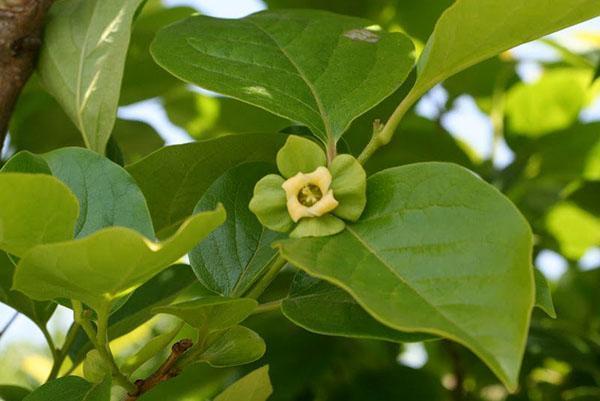 The peculiarity of the culture is the presence of male and female plants, which outwardly differ in the shape and nature of the flowers. Therefore, to increase yields, several pollinators are planted near the plantation with fruit trees. You can find out how persimmon blooms from the photo. Female, single flowers are distinguished by wide sepals and a corolla shape up to 2–3 cm in diameter.
The peculiarity of the culture is the presence of male and female plants, which outwardly differ in the shape and nature of the flowers. Therefore, to increase yields, several pollinators are planted near the plantation with fruit trees. You can find out how persimmon blooms from the photo. Female, single flowers are distinguished by wide sepals and a corolla shape up to 2–3 cm in diameter.
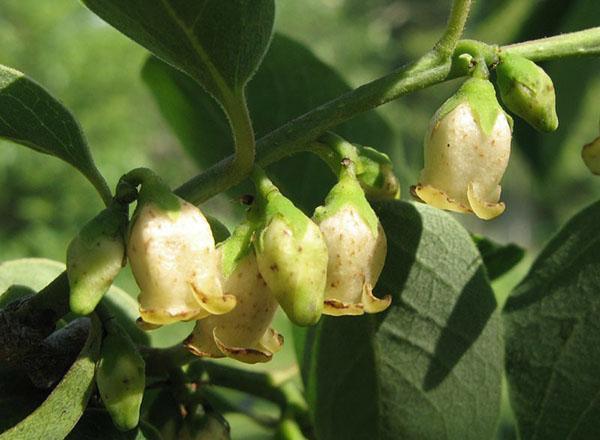 Male flowers sit on the shoots in a heap, sometimes in small inflorescences of 2-5 pieces. They have a narrower, glass-like shape and yellowish-white petals. In different regions, persimmon bloom can begin from March to May.
Male flowers sit on the shoots in a heap, sometimes in small inflorescences of 2-5 pieces. They have a narrower, glass-like shape and yellowish-white petals. In different regions, persimmon bloom can begin from March to May.
Simple leaves up to 7 cm long sitting alternately on shoots can be recognized:
- oval-heart-shaped;
- by a light green color that becomes darker as it grows;
- smooth surface with a well-visible mesh of veins.
In the fall, the trees are colored yellow and red. At the same time, falling leaves have practically no effect on how the persimmon tree looks, because all the branches are decorated with orange, yellow and almost red fruits.
Features of persimmon fruits
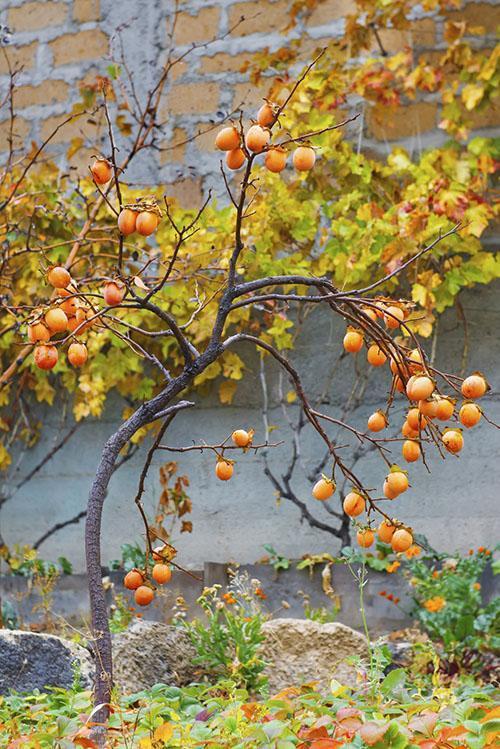 For those who are interested in how persimmon grows, it will be useful to know a little information about its fruits. In place of female flowers, at the end of flowering, a green dense ovary is formed, inside which there can be up to 10 large elongated seeds.As they ripen, the fruits acquire an oval, pointed or rounded heart-shaped shape. There are varieties with flattened berries.
For those who are interested in how persimmon grows, it will be useful to know a little information about its fruits. In place of female flowers, at the end of flowering, a green dense ovary is formed, inside which there can be up to 10 large elongated seeds.As they ripen, the fruits acquire an oval, pointed or rounded heart-shaped shape. There are varieties with flattened berries.
Depending on the variety and species, the color of ripe persimmons also changes, ranging from light yellow to almost brown. Ripening begins in September and lasts until December, so persimmons, when grown in Crimea, North Ossetia and Ukraine, sometimes find themselves under the snow.
Most often, oriental, Caucasian and American persimmons are grown in the gardens. Varieties with sweet, non-astringent fruits are especially popular with gardeners and consumers.
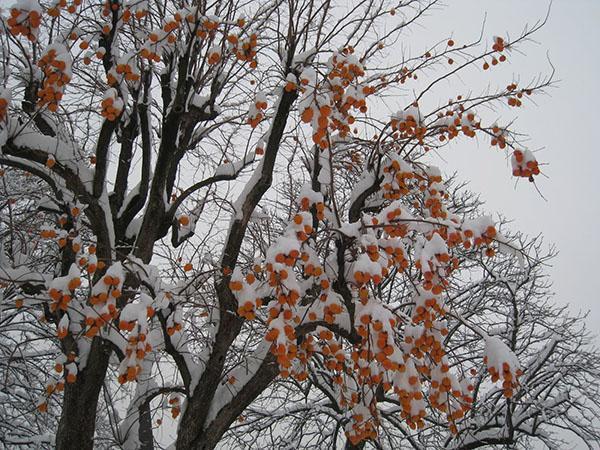 Anyone who loves the sweet taste of persimmons knows that fruits fall into two categories.
Anyone who loves the sweet taste of persimmons knows that fruits fall into two categories.
- The first ones are tasty even when not too ripe. They have soft, without pronounced fibers, the flesh, which becomes jelly-like in ripe fruits.
- In the second category of persimmons, the fruits become edible only after falling under the first frost or artificial freezing. The pulp of these varieties is coarser, it contains more fiber.
Both varieties have their pros and cons. Persimmon with soft gourmet fruits cannot stand long storage and transportation. The slightest damage to the skin threatens to spoil soon. Hard, astringent fruits can be stored for up to 30–40 days, and then, after exposure to freezing temperatures, enjoy a healthy treat.
How persimmon grows: requirements for open ground
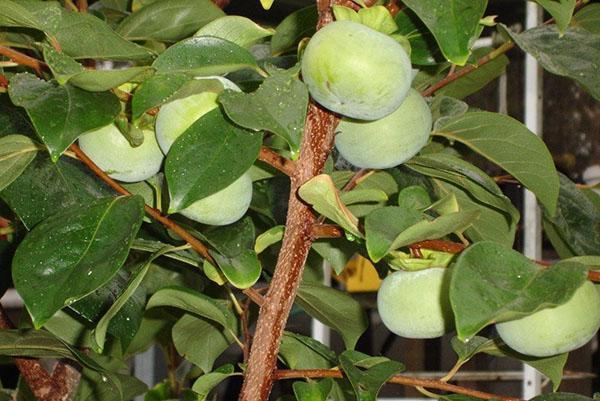 In nature, persimmon grows in warm regions with a long warm period of the year. Modern frost-resistant varieties made it possible to move the northern border of comfortable growth to the southern regions of Russia. How to grow persimmon on your garden plot?
In nature, persimmon grows in warm regions with a long warm period of the year. Modern frost-resistant varieties made it possible to move the northern border of comfortable growth to the southern regions of Russia. How to grow persimmon on your garden plot?
Observing how persimmon grows in Crimea, on the Black Sea coast of the Caucasus and Ukraine, in North Ossetia, you can see that trees in open ground prefer well-lit areas with protection from wind and flooding in the spring and autumn periods.
The culture is undemanding to the type and composition of the soil, while an excess of organic matter can be responded to by dropping the already formed ovary. The main thing is that the powerful root system receives enough air and moisture.
If persimmons find themselves in arid conditions, the quality of the crop deteriorates, a prolonged moisture deficit causes the ovary and foliage to fall off.
In regions where persimmon grows in natural conditions, trees bloom already in the warm season, and the fruits have time to fill up and practically ripen before severe frosts. To the north, persimmon needs protection from freezing and the danger of spring decay. This applies to both fruit-bearing trees and plants grown for decorative purposes.
So that harvesting from a tree 6-10 meters high does not turn into a risky adventure, the crown of persimmons begins to form from the first years after planting. In addition to limiting growth, pruning of young, too thin branches is carried out, often not withstanding the severity of the fruits and the first to freeze in cold winters.
How to grow persimmons yourself?
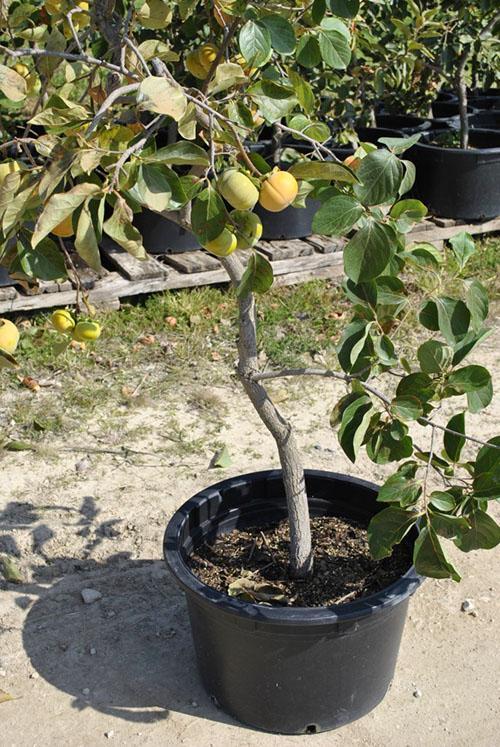 It is quite easy to become the owner of your own fruit-bearing tree on the site. To do this, you should purchase a frost-resistant persimmon seedling, plant it and take care of it until bright ripe fruits appear.
It is quite easy to become the owner of your own fruit-bearing tree on the site. To do this, you should purchase a frost-resistant persimmon seedling, plant it and take care of it until bright ripe fruits appear.
Persimmons can be propagated by growing a ripe fruit from the seed. Unfortunately, seedlings do not retain varietal properties, therefore, grafting will be required for abundant fruiting and obtaining sweet berries.
The best rootstock is the Caucasian persimmon, which is characterized by increased winter hardiness, undemanding soil and endurance. The tree has a powerful fibrous root, thanks to which the plant can easily transfer transfer to a larger pot. In the spring, when the bole reaches a thickness of 1 cm, a cultivar of any kind can be grafted onto a strong seedling. It is convenient to do an additional pollinator inoculation on a grown tree.
In most of Russia and in the Moscow region growing persimmon outdoors is problematic.A short summer is not enough for the fruits to set and ripen, during and after flowering there is a high risk of frost, and in winter frosts are too strong even for resistant Crimean varieties. Therefore, it is better to grow persimmons in a pot culture. In this case, it is easy to care for a tree up to one and a half meters high and, with good care, even get a good harvest.
Persimmon Russian woman at her summer cottage - video
Please tell me what kind of persimmon is it? The fruits are small, ripen from September to October, grows in Krasnodar
The fruits are very similar to Persimmon Chocolate Korolek.
Good afternoon ... We planted a seedling from the nursery in the spring of persimmons Korolek ... And now, in July, the leaves began to turn red ... Please tell me why this could be ...
Good evening, I planted two persimmon saplings (Russian woman), the leaves look like maple, are there any persimmon leaves. Thank you.
Insert a photo.
What an interesting and helpful article! Much was a discovery for me. For example, I did not know that there are frost-resistant persimmon varieties. And that this tree is unpretentious in growing. Got a lot of useful information. Thank you for that. How many beautiful and tasty things in the world have been created by our Creator, try not to try. I just want to repeat the words of one wise man: “He created everything beautiful in his time. He also put the awareness of eternity in the hearts of people ... ”It is true that to taste everything on earth, we need eternity.